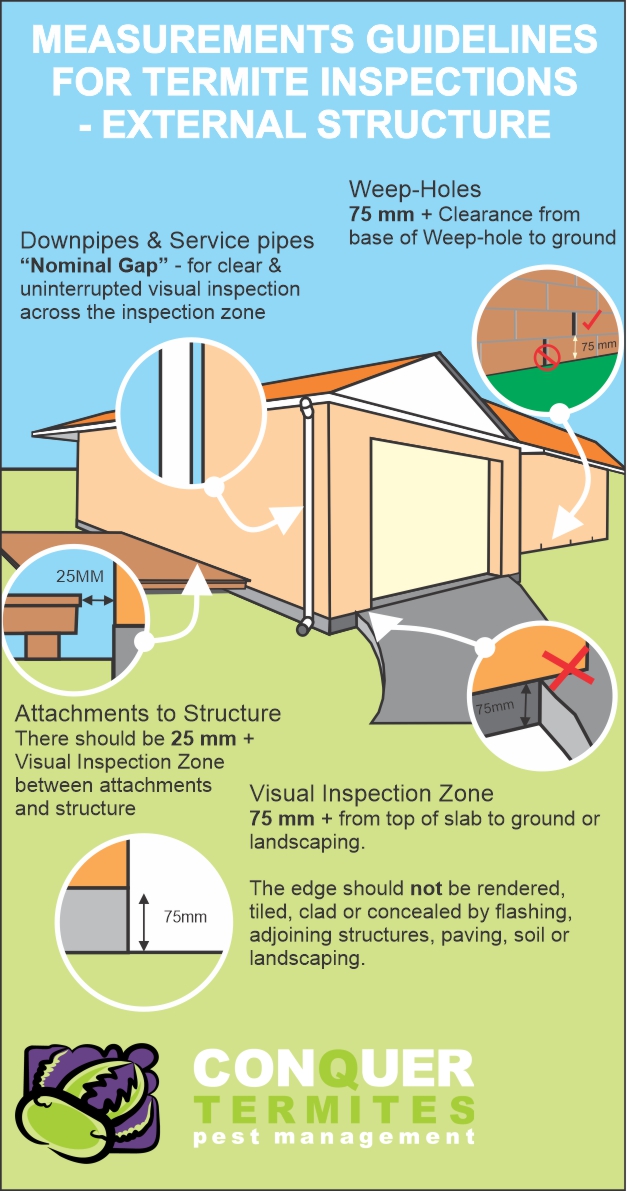Visual Inspection Zones - Doesn't stop Termites!
Here’s the crux: the Australian Building Code stipulates the baseline requirement for termite protection certification as halting ‘concealed’ termite entry. Following this, there’s a reliance on a consistent Visual Inspection Zone spanning 75 mm to identify any external breaches.
A significant portion of ‘New Builds’ on the Gold Coast inadvertently or intentionally obscure this Visual Inspection Zone through the addition of pathways, driveways, and landscaping features.
If you take a walk around your newly constructed property and are unable to spot a continuous 75 mm of the slab edge exposed, then it’s not in compliance. Under these conditions, a Form 43 should not be legitimately issued.
Key Points for Visual Inspection Zone:
- Communication: Did your Builder inform you about the requirement for periodic inspections of the visual inspection zone are necessary to ensure termite protection?
- Integrity of the Inspection Zone: Evaluate whether the stipulated 75 mm visual inspection zone around the slab is actually there. A quick way to assess this is by inspecting the edges of your driveway where it meets the house.
- Slab Edge Alterations: The slab edge should remain free from renderings, tiles, claddings, or concealments via flashing. Painting is permissible, but any other coating or alteration compromises the inspection zone.
- Additional Attachments: Has any structure like a deck, patio, or cabinetry been added adjacent to the external perimeter, thereby obscuring the visual inspection zone?
- Termite Management System: Is there an effective termite prevention system integrated either atop or at the base of the slab edge?
It’s crucial to address these checkpoints to ensure that your property remains compliant with regulations and, more importantly, safe from potential termite invasions.


